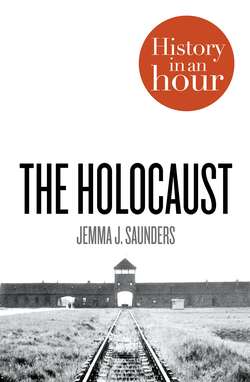Читать книгу The Holocaust: History in an Hour - Jemma Saunders J. - Страница 7
Early Warnings
ОглавлениеOn 11 November 1918, an armistice brought the First World War to a close. In the aftermath of the conflict Germany plunged into an economic depression, partly due to the unfavourable terms of the Versailles peace treaty. Among many politically right-wing Germans, a rumour was propagated that Jews and Bolsheviks were to blame for the loss of the war. In February 1920, the German Workers’ Party (Deutsche Arbeiterpartei, or DAP), which would later become the Nazi Party (Nationalsozialistische Deutsche Arbeiterpartei, or NSDAP), drew up a programme that included a declaration that Jews should not be citizens of Germany. Among the men who drafted this manifesto was Adolf Hitler.
Hitler, an Austrian by birth, had fought for Germany in the First World War and was bitterly disappointed when his beloved nation did not emerge victorious. His political views verged on the radical and he was a firm believer in the Dolchstosslegende; the ‘stab-in-the-back legend’ that the Jewish population had somehow betrayed the Fatherland in the closing days of the war. He became leader of the NSDAP in 1921.
While in prison in 1924, following a failed attempt to overthrow the government, Hitler began writing Mein Kampf. This autobiographical work, first published in 1925, showcased his obsession with racial purity and outlined his virulent anti-Semitism, with Jews referred to throughout the text in derogatory terms such as vermin and parasites. Whether this was a blueprint for the mass exterminations that took place in the 1940s is debatable, but Hitler’s stance on the Jews was clear: he believed their presence posed a threat to Germany and was a problem to be solved by radical means.
